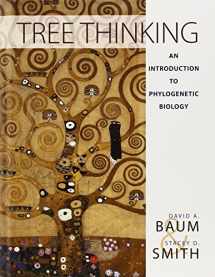
Tree Thinking: An Introduction to Phylogenetic Biology
Book details
Summary
Description
Baum and Smith, both professors evolutionary biology and researchers in the field of systematics, present this highly accessible introduction to phylogenetics and its importance in modern biology. Ever since Darwin, the evolutionary histories of organisms have been portrayed in the form of branching trees or ";phylogenies."; However, the broad significance of the phylogenetic trees has come to be appreciated only quite recently. Phylogenetics has myriad applications in biology, from discovering the features present in ancestral organisms, to finding the sources of invasive species and infectious diseases, to identifying our closest living (and extinct) hominid relatives. Taking a conceptual approach, Tree Thinking introduces readers to the interpretation of phylogenetic trees, how these trees can be reconstructed, and how they can be used to answer biological questions. Examples and vivid metaphors are incorporated throughout, and each chapter concludes with a set


We would LOVE it if you could help us and other readers by reviewing the book
Book review



